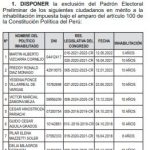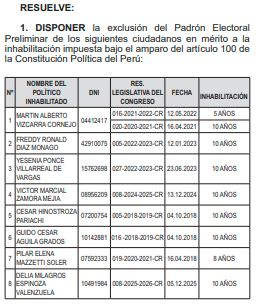According to calculations of Inter-American Development Bank (IDB), the potential gain for Latin America and the Caribbean of the opportunities of nearshoring, in the short and medium term, they could represent an increase of up to US$78 billion in new exports of goods and services, which translates into opportunities for the region in the automotive, textile, pharmaceutical and renewable energy industries, among others.
According to advanced data from a study prepared by the international organization, of the US$78,000 million, US$64,000 million would correspond to trade in goods and US$14,000 million to trade in services, with Mexico and Brazil being the countries that would have the greatest opportunities, although all countries would benefit.
“The growing environmental concerns, added to the health crisis and the recent Russian war in Ukraine, have created a context where the region can contribute to the global economy and the fight against inflation through greater participation in global supply chains, in a sustainable and equitable manner,” said IDB President Mauricio Claver Carone.
The information was delivered to senior representatives of governments and companies in the hemisphere who met for the Summit of the Americas to analyze options to take advantage of the gaps that are opening up in the face of the reconfiguration of global supply chains, trends in trade sustainability and climate change, and the growing digitalization of the economy.
The appointment, which preceded the start of the Summit of the Americasrepresented an effort promoted by the Inter-American Development Bank to promote an economic recovery in the region through the collective action of the countries and in close collaboration with the private sector.
“This meeting is a demonstration that leaders from both the public and private sectors can put aside their differences to find ways to generate the employment and well-being that our peoples yearn for, and trade is one of the main vehicles to accelerate our prosperity”, added the president of the IDB.
Managing support for the reconfiguration of global value chains (GVC) is one of the priorities of the IDB’s 2025 vision to accelerate economic recovery and growth in the region, the agency reported in a press release.
Private sector participation
The event sought to foster an exchange on key issues on the trade agenda. The dialogue was attended by more than 100 companies, with the intervention of representatives from companies such as Gap Inc., UPS, Cintora, Citibank, Amazon Web Services, Stripe, and Microsoft.
Myron Brilliant, the executive vice president and head of international affairs for the United States Chamber of Commerce, presented the private sector’s view of trade as part of the Americas Business Dialogue (ABD), an entity which brings together companies from all sectors and countries of the Western Hemisphere, and which has the support of the IDB as coordinating entity.
Value chains
The IDB informed in a press release that recent studies indicate that the participation of firms in global value chains (GVC) brings multiple benefits. In addition to the traditional benefits provided by more trade and investment, participating in a GVC contributes to greater productivity through knowledge and technology transfers, and the generation of more and better jobs, with new opportunities for women.
“An increase of 10 percent in the participation of a country leads to increases of between 11 percent and 14 percent of GDP per capita,” highlights the note.
In order for the Region to take advantage of the opportunity that is opening up to increase participation in GVCs, the IDB proposes that the countries work on what it calls a “3Is” strategy: investment, infrastructure, and integration.
In addition, the region must increase the availability of productive financing for companies in the region and in particular for MSMEs, in order to allow them to successfully integrate into international markets.
Ministers also discussed the importance of sustainability in trade. IDB calculations estimate that internal emissions for external consumption contribute to 20% of the gas emissions that cause the greenhouse effect of Latin America and the Caribbean – a significant number, but somewhat less than global trade-related emissions.
















